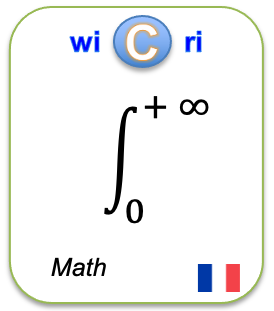Fourier’s heat conduction equation: History, influence, and connections
Identifieur interne : 000240 ( Main/Exploration ); précédent : 000239; suivant : 000241Fourier’s heat conduction equation: History, influence, and connections
Auteurs : T. N. Narasimhan [États-Unis]Source :
- Proceedings of the Indian Academy of Sciences - Earth and Planetary Sciences [ 0253-4126 ] ; 1999-09-01.
English descriptors
Abstract
Abstract: The equation describing the conduction of heat in solids has, over the past two centuries, proved to be a powerful tool for analyzing the dynamic motion of heat as well as for solving an enormous array of diffusion-type problems in physical sciences, biological sciences, earth sciences, and social sciences. This equation was formulated at the beginning of the nineteenth century by one of the most gifted scholars of modern science, Joseph Fourier of France. A study of the historical context in which Fourier made his remarkable contribution and the subsequent impact his work has had on the development of modern science is as fascinating as it is educational. This paper is an attempt to present a picture of how certain ideas initially led to Fourier’s development of the heat equation and how, subsequently, Fourier’s work directly influenced and inspired others to use the heat diffusion model to describe other dynamic physical systems. Conversely, others concerned with the study of random processes found that the equations governing such random processes reduced, in the limit, to Fourier’s equation of heat diffusion. In the process of developing the flow of ideas, the paper also presents, to the extent possible, an account of the history and personalities involved.
Url:
DOI: 10.1007/BF02842327
Affiliations:
Links toward previous steps (curation, corpus...)
- to stream Istex, to step Corpus: 000432
- to stream Istex, to step Curation: 000385
- to stream Istex, to step Checkpoint: 000229
- to stream Main, to step Merge: 000241
- to stream Main, to step Curation: 000240
Le document en format XML
<record><TEI wicri:istexFullTextTei="biblStruct"><teiHeader><fileDesc><titleStmt><title xml:lang="en">Fourier’s heat conduction equation: History, influence, and connections</title><author><name sortKey="Narasimhan, T N" sort="Narasimhan, T N" uniqKey="Narasimhan T" first="T. N." last="Narasimhan">T. N. Narasimhan</name></author></titleStmt><publicationStmt><idno type="wicri:source">ISTEX</idno><idno type="RBID">ISTEX:56EAA6691FB5858802F7463DE7F76ADD95003323</idno><date when="1999" year="1999">1999</date><idno type="doi">10.1007/BF02842327</idno><idno type="url">https://api.istex.fr/document/56EAA6691FB5858802F7463DE7F76ADD95003323/fulltext/pdf</idno><idno type="wicri:Area/Istex/Corpus">000432</idno><idno type="wicri:explorRef" wicri:stream="Istex" wicri:step="Corpus" wicri:corpus="ISTEX">000432</idno><idno type="wicri:Area/Istex/Curation">000385</idno><idno type="wicri:Area/Istex/Checkpoint">000229</idno><idno type="wicri:explorRef" wicri:stream="Istex" wicri:step="Checkpoint">000229</idno><idno type="wicri:doubleKey">0253-4126:1999:Narasimhan T:fourier:s:heat</idno><idno type="wicri:Area/Main/Merge">000241</idno><idno type="wicri:Area/Main/Curation">000240</idno><idno type="wicri:Area/Main/Exploration">000240</idno></publicationStmt><sourceDesc><biblStruct><analytic><title level="a" type="main" xml:lang="en">Fourier’s heat conduction equation: History, influence, and connections</title><author><name sortKey="Narasimhan, T N" sort="Narasimhan, T N" uniqKey="Narasimhan T" first="T. N." last="Narasimhan">T. N. Narasimhan</name><affiliation wicri:level="3"><country>États-Unis</country><placeName><settlement type="city">Berkeley (Californie)</settlement><region type="state">Californie</region></placeName><wicri:orgArea>Department of Materials Science and Mineral Engineering, Department of Environmental Science, Policy, and Management, Lawrence Berkeley National Laboratory, University of California</wicri:orgArea></affiliation></author></analytic><monogr></monogr><series><title level="j">Proceedings of the Indian Academy of Sciences - Earth and Planetary Sciences</title><title level="j" type="abbrev">Proc. Indian Acad. Sci. (Earth Planet Sci.)</title><idno type="ISSN">0253-4126</idno><idno type="eISSN">0973-774X</idno><imprint><publisher>Springer India</publisher><pubPlace>New Delhi</pubPlace><date type="published" when="1999-09-01">1999-09-01</date><biblScope unit="volume">108</biblScope><biblScope unit="issue">3</biblScope><biblScope unit="page" from="117">117</biblScope><biblScope unit="page" to="148">148</biblScope></imprint><idno type="ISSN">0253-4126</idno></series></biblStruct></sourceDesc><seriesStmt><idno type="ISSN">0253-4126</idno></seriesStmt></fileDesc><profileDesc><textClass><keywords scheme="KwdEn" xml:lang="en"><term>Fourier</term><term>diffusion</term><term>history</term></keywords></textClass><langUsage><language ident="en">en</language></langUsage></profileDesc></teiHeader><front><div type="abstract" xml:lang="en">Abstract: The equation describing the conduction of heat in solids has, over the past two centuries, proved to be a powerful tool for analyzing the dynamic motion of heat as well as for solving an enormous array of diffusion-type problems in physical sciences, biological sciences, earth sciences, and social sciences. This equation was formulated at the beginning of the nineteenth century by one of the most gifted scholars of modern science, Joseph Fourier of France. A study of the historical context in which Fourier made his remarkable contribution and the subsequent impact his work has had on the development of modern science is as fascinating as it is educational. This paper is an attempt to present a picture of how certain ideas initially led to Fourier’s development of the heat equation and how, subsequently, Fourier’s work directly influenced and inspired others to use the heat diffusion model to describe other dynamic physical systems. Conversely, others concerned with the study of random processes found that the equations governing such random processes reduced, in the limit, to Fourier’s equation of heat diffusion. In the process of developing the flow of ideas, the paper also presents, to the extent possible, an account of the history and personalities involved.</div></front></TEI><affiliations><list><country><li>États-Unis</li></country><region><li>Californie</li></region><settlement><li>Berkeley (Californie)</li></settlement></list><tree><country name="États-Unis"><region name="Californie"><name sortKey="Narasimhan, T N" sort="Narasimhan, T N" uniqKey="Narasimhan T" first="T. N." last="Narasimhan">T. N. Narasimhan</name></region></country></tree></affiliations></record>Pour manipuler ce document sous Unix (Dilib)
EXPLOR_STEP=$WICRI_ROOT/Wicri/Mathematiques/explor/SophieGermainV1/Data/Main/Exploration
HfdSelect -h $EXPLOR_STEP/biblio.hfd -nk 000240 | SxmlIndent | more
Ou
HfdSelect -h $EXPLOR_AREA/Data/Main/Exploration/biblio.hfd -nk 000240 | SxmlIndent | more
Pour mettre un lien sur cette page dans le réseau Wicri
{{Explor lien
|wiki= Wicri/Mathematiques
|area= SophieGermainV1
|flux= Main
|étape= Exploration
|type= RBID
|clé= ISTEX:56EAA6691FB5858802F7463DE7F76ADD95003323
|texte= Fourier’s heat conduction equation: History, influence, and connections
}}
|
| This area was generated with Dilib version V0.6.33. | |

